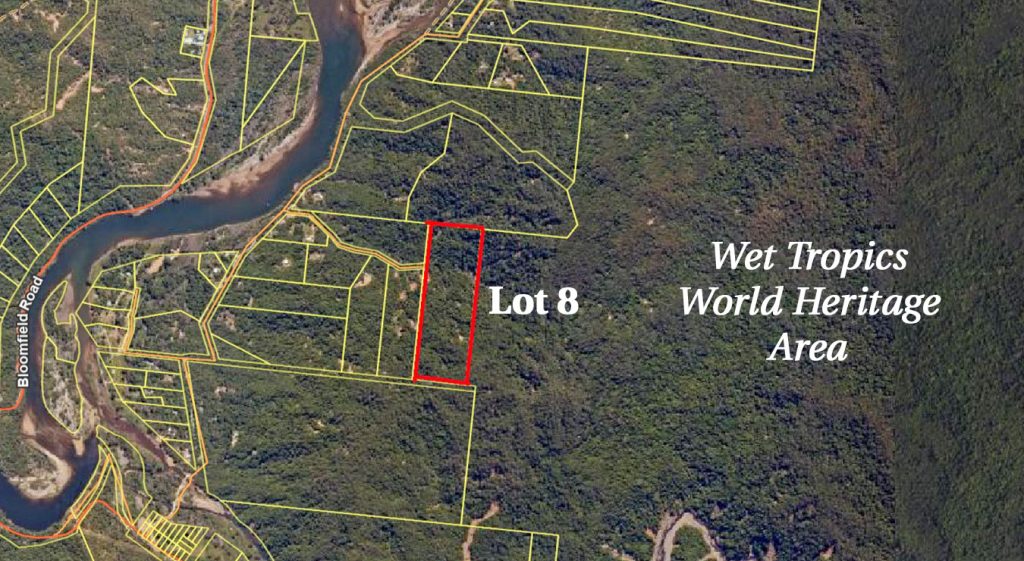We did it! Lot 8 Idriess Close is protected.
Thank you for being the force for Nature we need.
Thanks to your support we added almost 12 hectares of intact, high-conservation value Wet Tropics Rainforest habitat to our growing portfolio of protection.
There is nothing as sublime nor as beautiful as Nature.
From the perfect form of a fern leaf and the languid yet purposeful journey of the liana vine, to the sound of pure water as it flows over rocks—the natural world of Far North Queensland has existed for a very, very long time and is now the oldest rainforest on the planet.
And yet, all it takes is one impulsive decision—one moment of short-sighted development—to catastrophically change this place forever.
Lot 8 Idriess Close, Degarra is an almost pristine tract of rainforest that must be seen to be believed.
The property is ideal habitat for rare and threatened species such as the Spectacled Flying Fox, Spotted-Tail Quoll, Bare-Rumped Sheathtail Bat and the iconic Southern Cassowary.

To purchase, protect and maintain Lot 8 we needed to raise $100,000—and this appeal we were very fortunate to have a business partner match every donation up to $50,000!
We extend a massive thank you to The Travel Corporation and the Tread Right Foundation for their incredible generosity in helping us to reach our fundraising target. Having their ongoing support as a Rainforest Rescue Business Partner makes a tangible difference to the future of the Australian Wet Tropics Rainforest.
The site is adjacent to the Wet Tropics World Heritage area and the Bloomfield River in a rural coastal locality called Degarra. Renowned for its remoteness and saltwater crocodiles, it’s here that this beautiful, natural property has been held in its natural state for many years. This is also the farthest north we’ve ever ventured.
We will now protect it forever and work towards achieving a Nature Refuge status for this special place.
Lot 8 ECOLOGICAL Significance
- Protecting this lot strengthens the ecological buffer around the World Heritage-listed Wet Tropics Rainforest
- The lot contributes to a critical wildlife corridor, enabling movement of species like the cassowary across lowland and upland habitat mosaics
- Enhances regional climate resilience by maintaining intact forest cover and stream function
- Contains threatened ecological communities:
Lowland Tropical Rainforest of the Wet Tropics (Endangered) - Adjacent Land: Directly borders the Wet Tropics World Heritage Area, stewarded by the Eastern Kuku Yalanji Traditional Owners through Jabalbina Yalanji Aboriginal Corporation
- In December 2023, Cyclone Jasper caused severe flooding, damaging the property’s creek system and destroying old-growth keystone species such as Ficus albipila. Despite the intensity of the event, regeneration is occurring via native pioneer species without any observed weed incursion—evidence of the property’s exceptional ecological resilience and integrity
Satellite view of Lot 8 Idriess Close, Degarra. Located on the edge of the Wet Tropics World Heritage area, in close proximity to the Bloomfield River. This land is a vital buffer between highland old-growth rainforest and the lowland mix of habitats and developed areas.
One thing is certain: once land is developed, it is almost never returned to Nature. It becomes part of the ever-consuming mindset that feeds an endless appetite for more.
When we consider the age of the Daintree Rainforest and Wet Tropics World Heritage area—the many millions of years—we must realise both the enormity of those timescales and the unparalleled ecological richness that has resulted. But these rich ecosystems are also incredibly fragile and vulnerable to the impacts that humans make.
We know we have said this before, and we’ll say it again—the Daintree and more broadly, the Wet Tropics World Heritage area are stunning examples of evolution on so many levels. From the amazing rainforest gardener that is the Southern Cassowary to the Daintree Rainbow Fish—from the Daintree River to Cape Tribulation, the Wet Tropics are a masterpiece of evolution and Nature’s intelligence.
That is one of the reasons it’s so important to protect it: there are lifeforms and ecosystems here that exist nowhere else on earth.
When we visited the rainforest at Lot 8, we were captivated by its richness—huge native mahogany trees soared above us, with crowns of bird’s nest ferns and snaking lianas wrapped around the thick lower trunks. Beneath our feet the forest floor was alive with fungi, invertebrates and scurrying reptiles. The previous custodian was keen to keep it this way. As we will.
Lot 8’s terrain is tricky to navigate, quickly rising up into the higher areas within the Wet Tropics World Heritage boundary. Seasonal creek beds indicate that adverse weather will move through here at speed–cleared top soil easily could end up in the Bloomfield River. This is a fragile area, sandwiched between the edge of the World Heritage area and a developed site where the rainforest has been cleared. In fact, the clearing resulted in a landslip on both properties, hence why Lot 8 is ‘almost’ pristine rainforest. Now that we are successful in protecting this property we will restore the damaged areas back into natural habitat.
You know that Nature needs all the help it can get right now—and thanks to you and your support, we’re protecting an additional stretch of intact, precious rainforest, covering almost 12 hectares.
You are a part of Rainforest Rescue, and you are the force for Nature that we depend on. Thank you for your support.

PURCHASED PROPERTIES
It’s in our nature to protect. With the help of Rainforest Rescuers – people like you – we are significantly protecting pristine habitat for Nature and achieving strong wins for biodiversity. Visit our Protection Portfolio page for a full list of properties protected by Rainforest Rescue since 1999.




